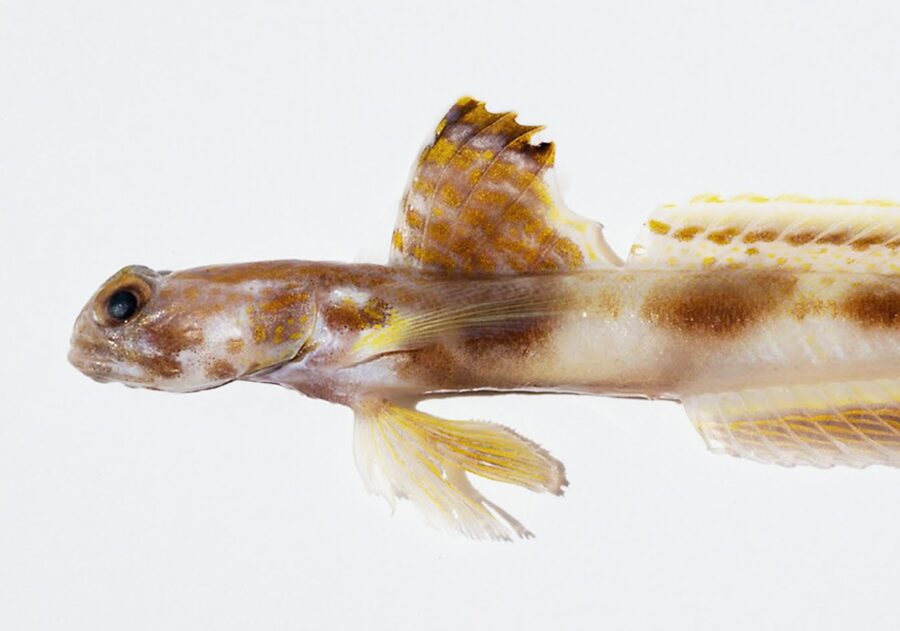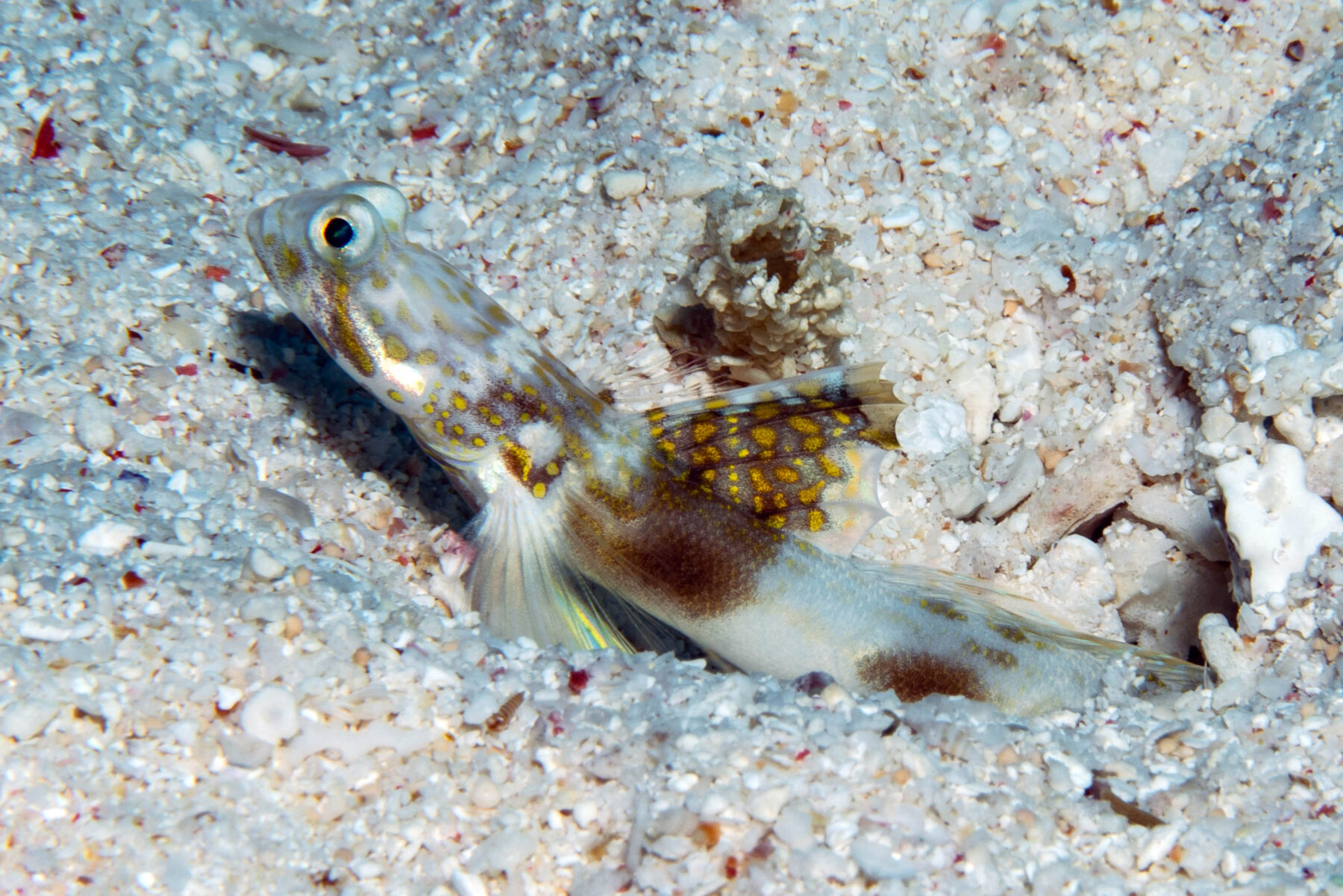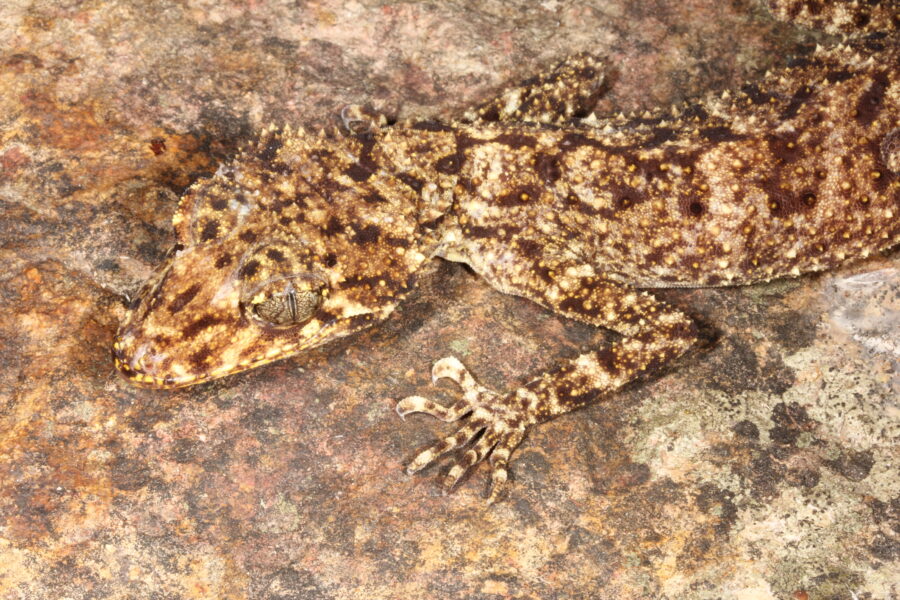New Great Barrier Reef fish species discovered living ‘in plain sight’

It was first sighted in a sand burrow by scientists mapping the changing biodiversity on and around Lady Elliot Island at the Great Barrier Reef’s southern end.
“It’s been a while since a ‘never recorded anywhere before’ fish has been described from the Great Barrier Reef,” says Leaf to Reef project marine biologist Dr Chris Dudgeon.
“The last completely new species to be described was a grouper found in the deep sea in 2019, which is where most new discoveries come from.
“To find a new fish species in the shallows on a reef in plain sight is unique.”
The Lady Elliot shrimp goby (Tomiyamichthys elliotensis) is small and white with brown spots, yellow-orange bands and a large sail-like first dorsal fin.
Scientists believe it may be present throughout the whole Great Barrier Reef.

Researchers are now wondering how many more marine creatures are waiting to be discovered in the Reef.
They hope to identify up to seven other new species – including dwarf and pygmy gobies as well as damselfish – that have been unearthed by the survey.
Scientists have begun the complicated and lengthy process of confirming the discoveries, which involves consultation with global experts.
The majority of the potential new species uncovered at Lady Elliot Island were gobies which are frequently overlooked by divers and marine scientists due to their small size.
There are currently more than 100 recognised species of shrimp gobies in the Indo-West Pacific region.
They often live in the same burrows as shrimps, acting as a lookout for predators.
At a time when marine life is disappearing from the world’s oceans, University of the Sunshine Coast Professor Kathy Townsend says the new discovery highlights the importance of the Leaf to Reef project that she leads.
The project is part of the Great Barrier Reef Foundation’s Reef Islands Initiative which aims to protect critical habitats in the world’s largest coral system.


